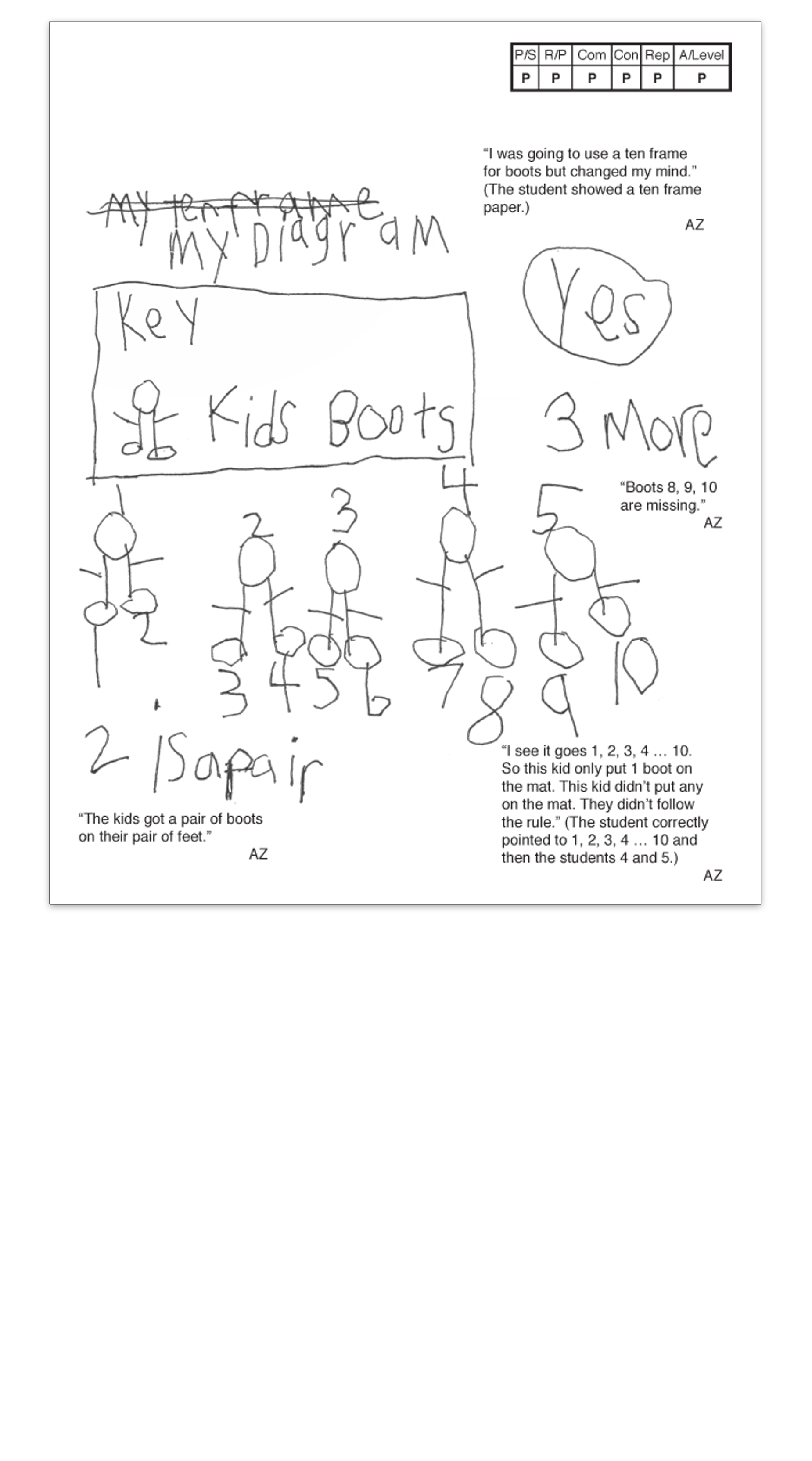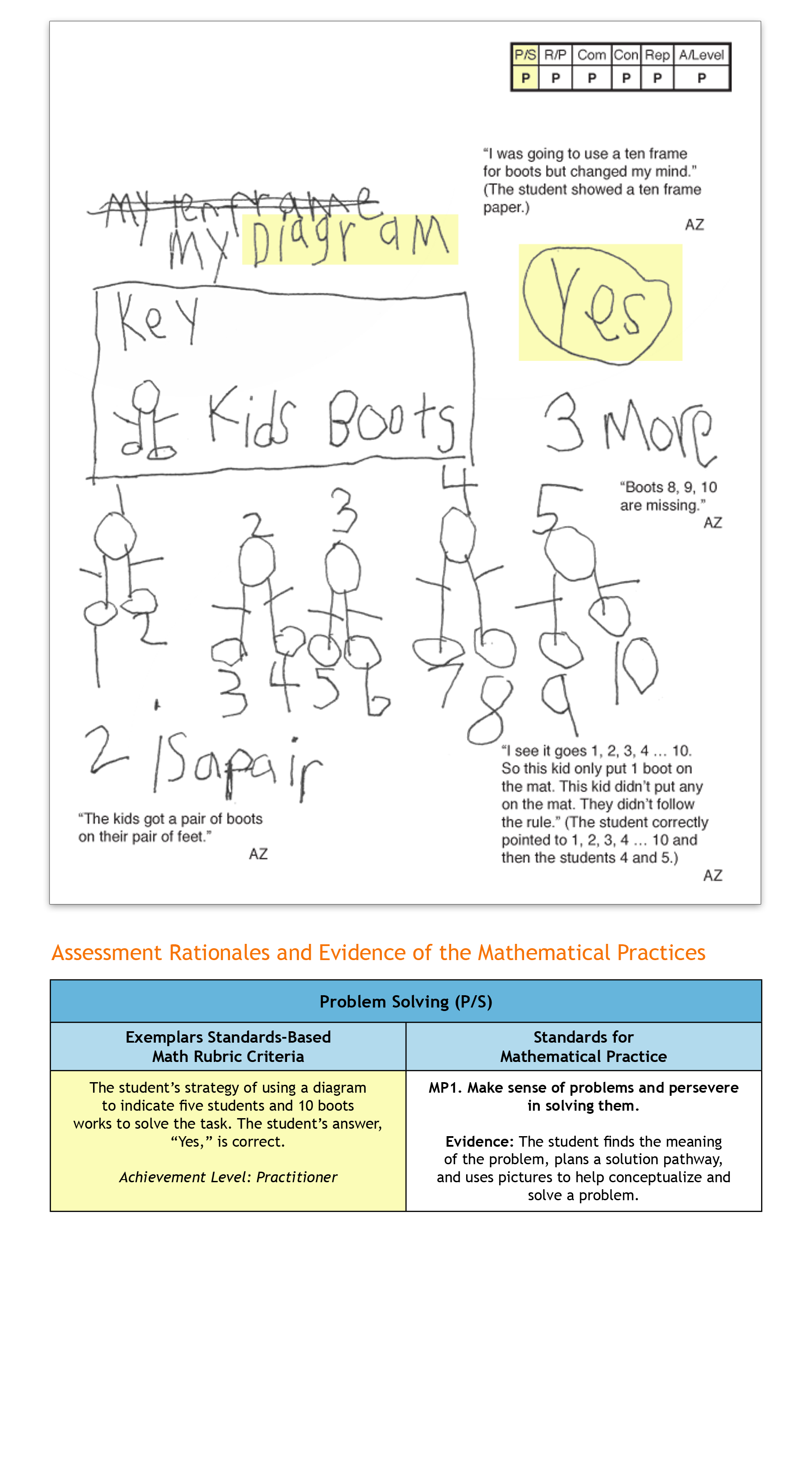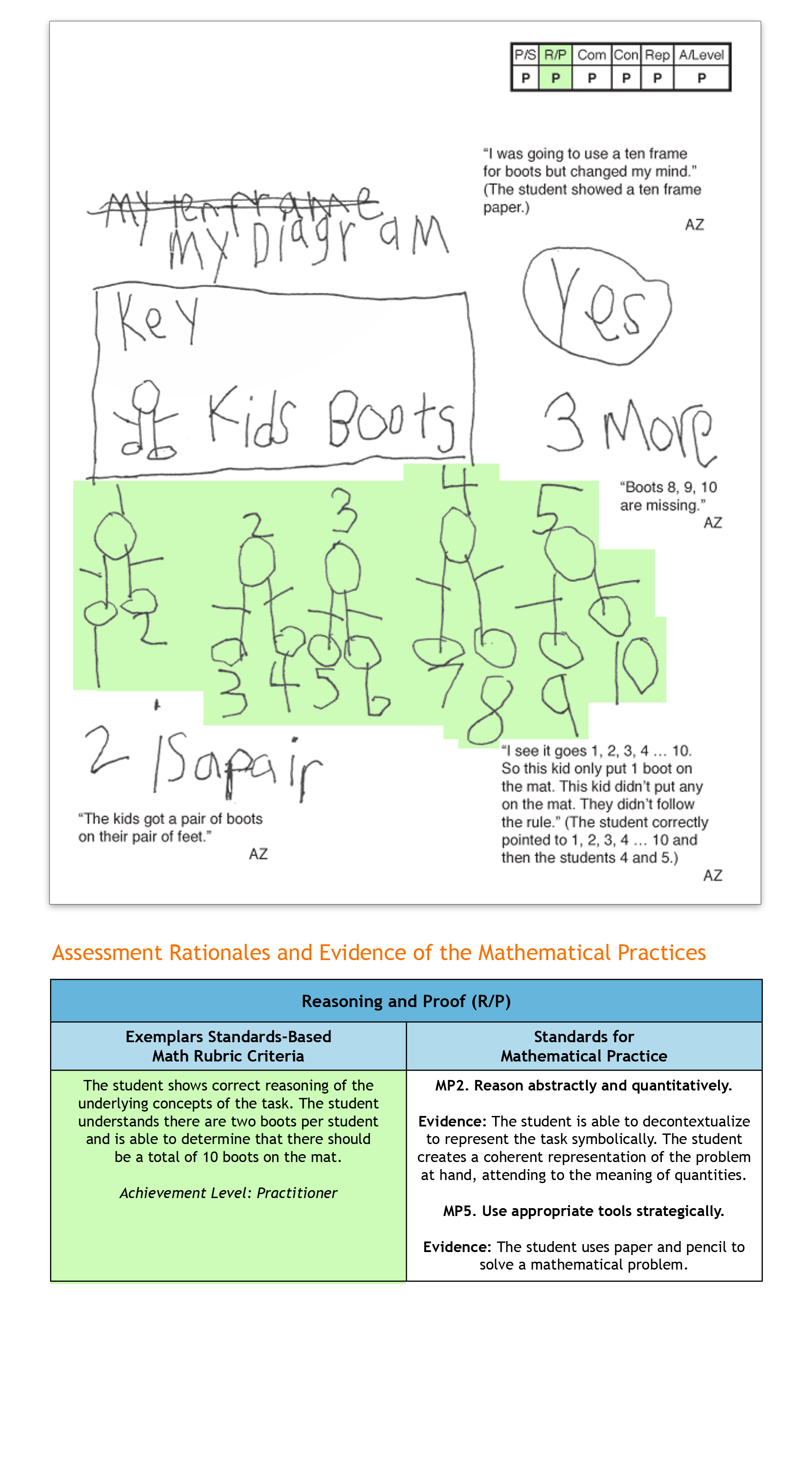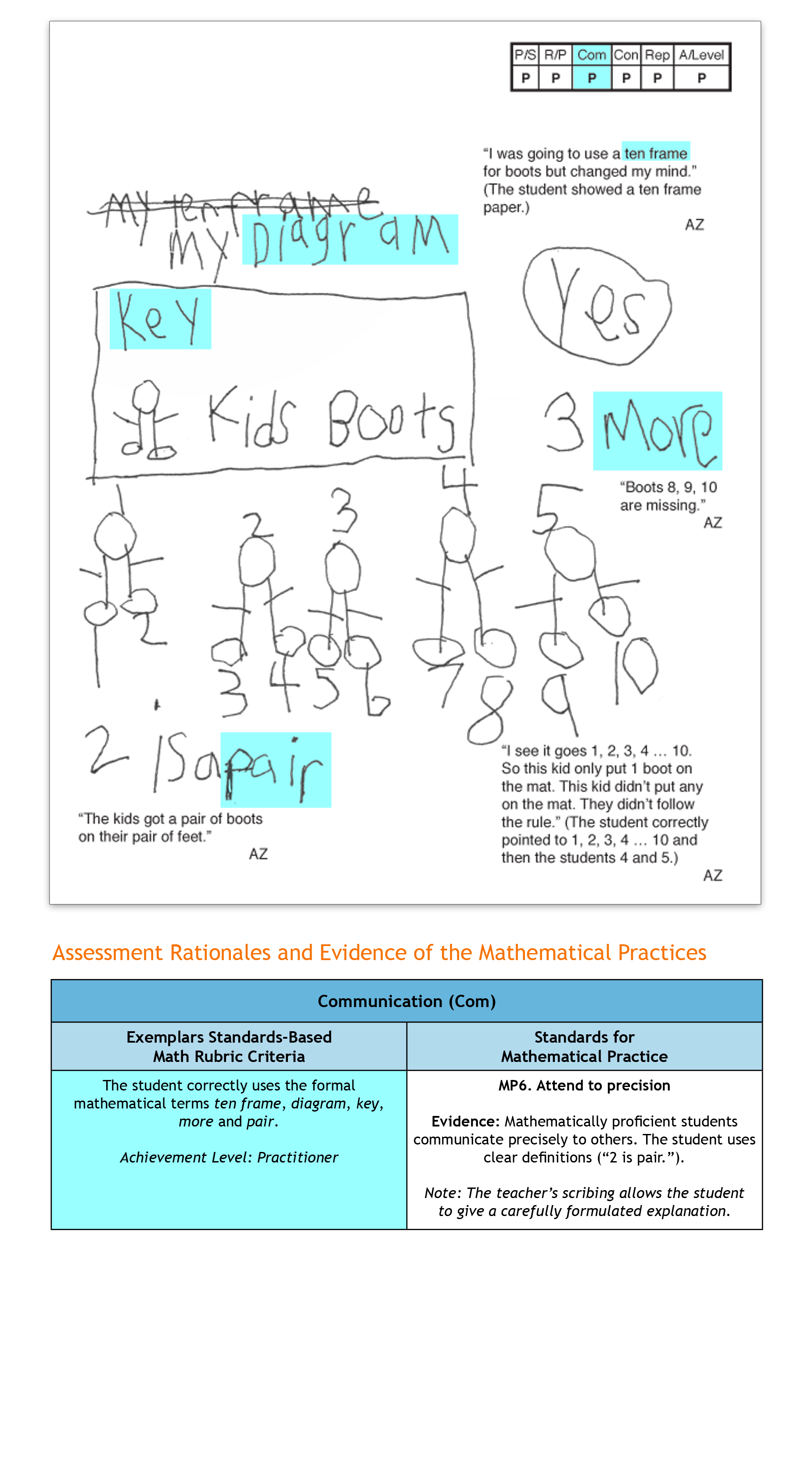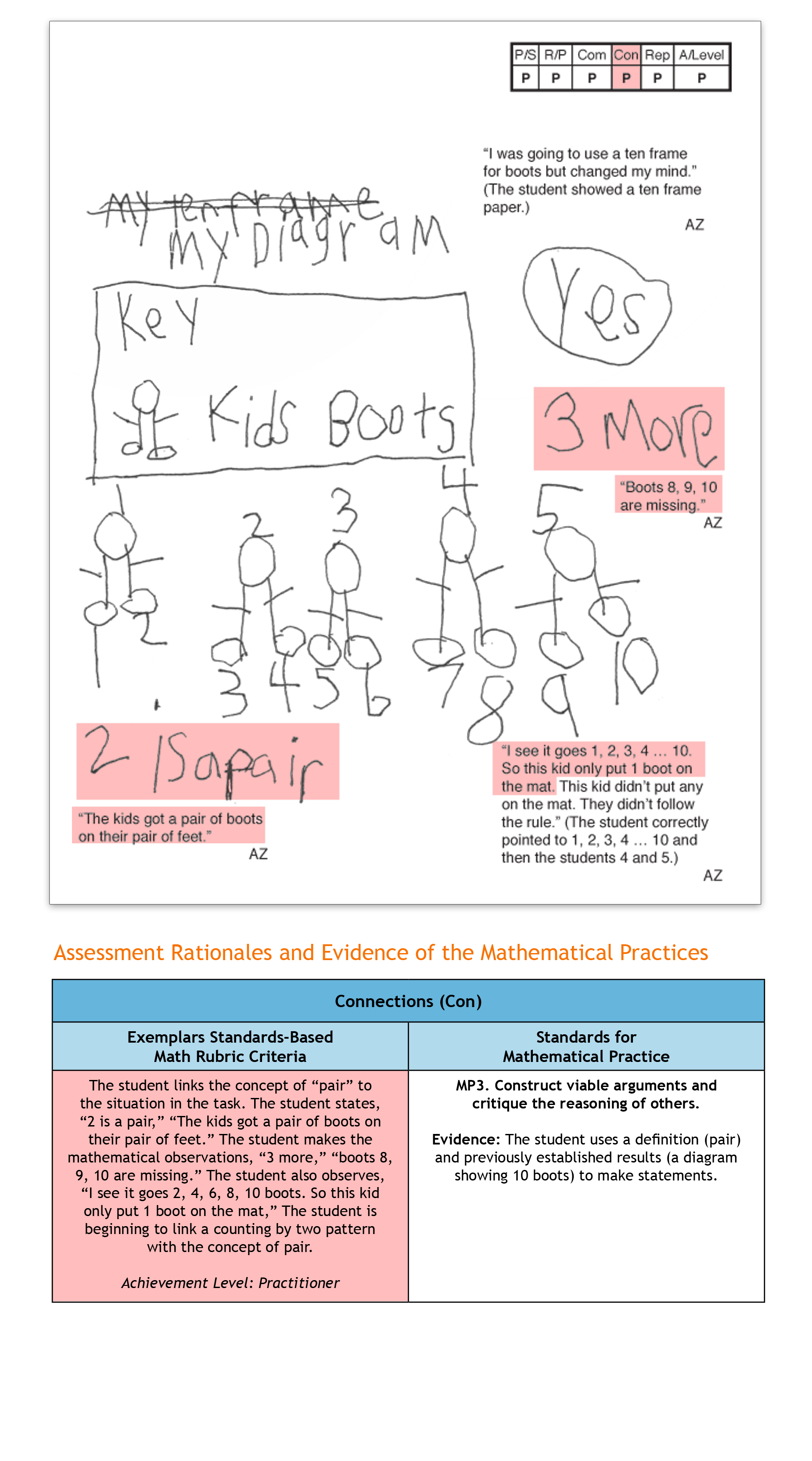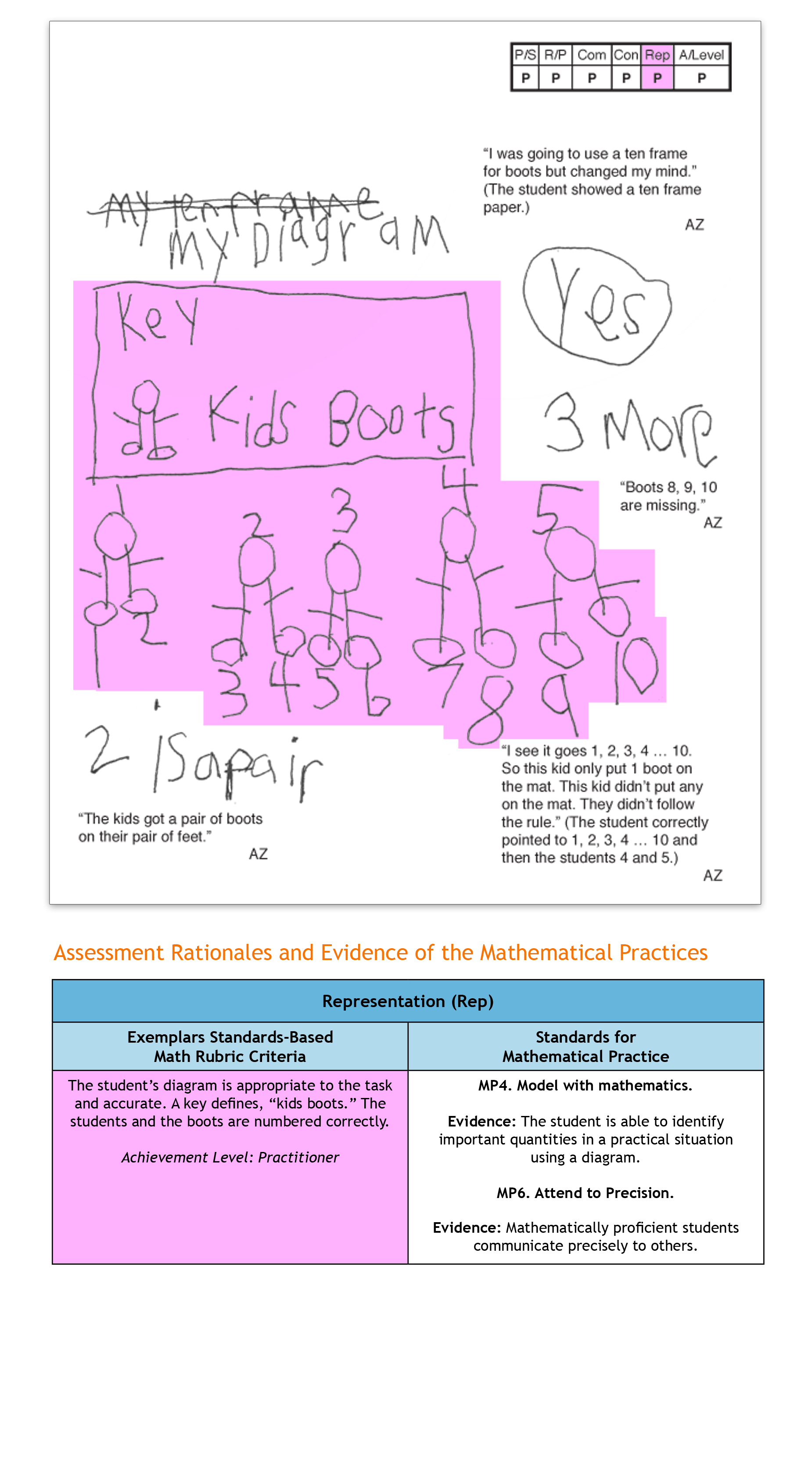Supporting the Standards for Mathematical Practice With Exemplars Performance Tasks and Rubric at the Kindergarten Level
Written By: Deborah Armitage, M.Ed., Exemplars Math Consultant
Summer Blog Series Overview:
Exemplars performance-based material is a supplemental resource that provides teachers with an effective way to implement the Common Core through problem solving. This blog represents Part 1 of a six-part series that features a problem-solving task linked to a CCSS for Mathematical Content and a student’s solution in grades K–5. Evidence of all eight CCSS for Mathematical Practice will be exhibited by the end of the series.
The Exemplars Standards-Based Math Rubric allows teachers to examine student work against a set of analytic criteria that consists of the following categories: Problem Solving, Reasoning and Proof, Communication, Connections and Representation. There are four performance/achievement levels: Novice, Apprentice, Practitioner (meets the standard) and Expert. The Novice and Apprentice levels support a student’s progress towards being able to apply the criteria of a Practitioner and Expert. It is at these higher levels of achievement where support for the Mathematical Practices is found.
Exemplars problem-solving tasks provide students with an opportunity to apply their conceptual understanding of standards, mathematical processes and skills. Observing student anchor papers with assessment rationales that demonstrate the alignment between the Exemplars assessment rubric and the CCSS for Mathematical Content and Mathematical Practice can be insightful for educators. Anchor papers and assessment rationales provide examples of what to look for in your own students’ work. Examples of Exemplars rubric criteria and the Mathematical Practices are embedded in the assessment rationales at the bottom of the page. The full version of our rubric may be accessed here. It is often helpful to have this in-hand while reviewing a piece of student work.
Blog 1: Observations at the Kindergarten Level
The first anchor paper and set of assessment rationales we’ll review in this series is taken from a Kindergarten student’s solution for the task, “Boots.” You will notice that the teacher has “scribed” the student’s oral explanation. This method allows teachers to fully capture the mathematical reasoning of early writers.
“Boots” is one of a number of Exemplars tasks aligned to the Counting and Cardinality Standard K.CC.5. This task would be used toward the end of the learning time allocated to this standard. Prior to “Boots” being given, students have already completed a number of tasks with questions that state, “How many ears?”, “How many shoes?”, “How many balloons?”, etc. “Boots” gives students an opportunity to bring a stronger understanding of the concept how many to their solution.
Kindergarten Task: Boots
Five students wear boots to go outside for recess. When the students come in from recess they must put all boots on a rubber mat to dry. The teacher counts seven boots on the mat. The teacher thinks some boots are missing. Is the teacher correct? Show and tell how you know.
Common Core Task Alignments
- Content Standard K.CC.5: Count to answer “how many?” questions about as many as 20 things arranged in a line, a rectangular array, or a circle or, as many as 10 things in a scattered configurations: given a number from 1-20, count out that many objects.
- Mathematical Practices: MP1, MP2, MP3, MP4, MP5, MP6


